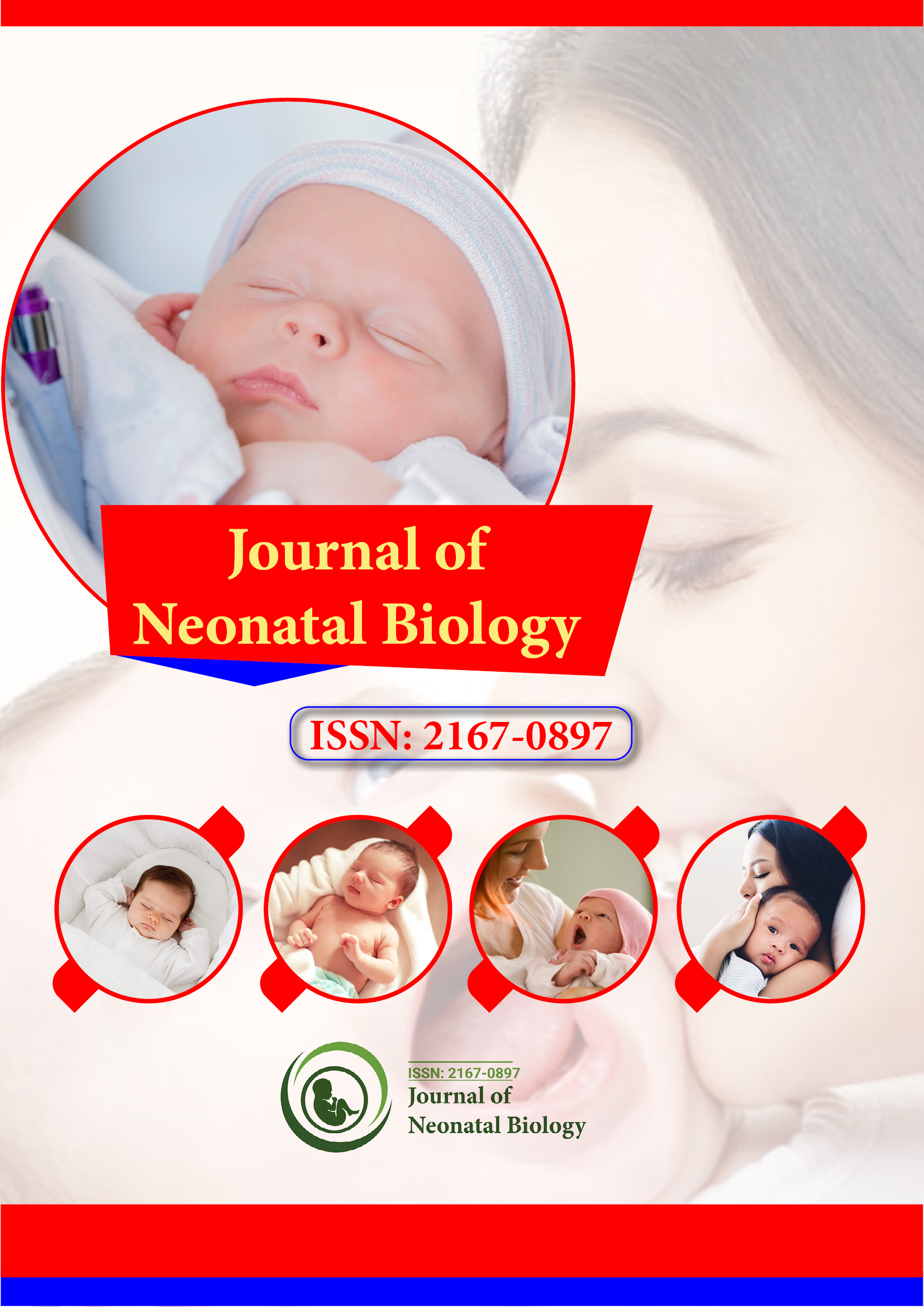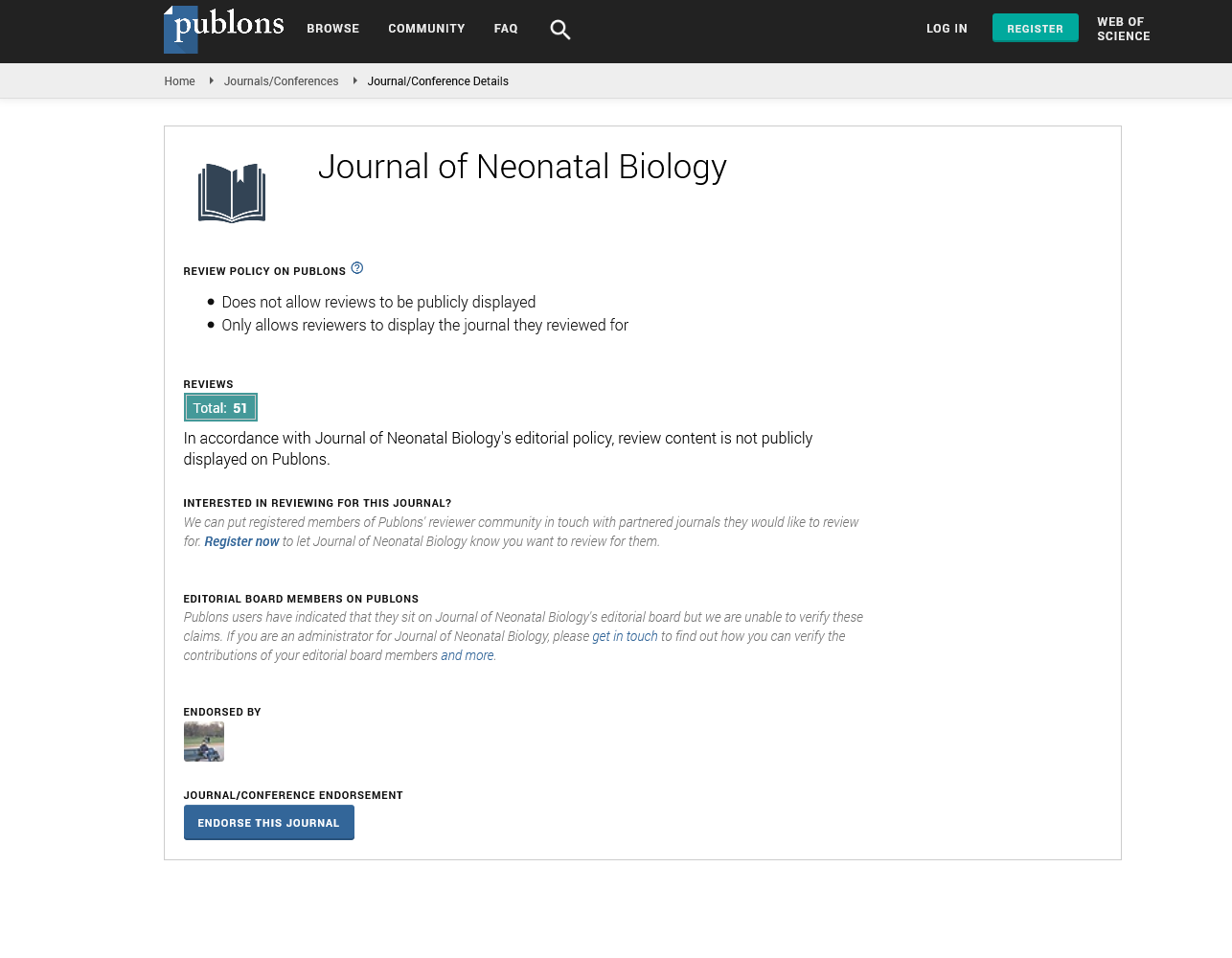Indexed In
- Genamics JournalSeek
- RefSeek
- Hamdard University
- EBSCO A-Z
- OCLC- WorldCat
- Publons
- Geneva Foundation for Medical Education and Research
- Euro Pub
- Google Scholar
Useful Links
Share This Page
Journal Flyer

Open Access Journals
- Agri and Aquaculture
- Biochemistry
- Bioinformatics & Systems Biology
- Business & Management
- Chemistry
- Clinical Sciences
- Engineering
- Food & Nutrition
- General Science
- Genetics & Molecular Biology
- Immunology & Microbiology
- Medical Sciences
- Neuroscience & Psychology
- Nursing & Health Care
- Pharmaceutical Sciences
Commentary - (2025) Volume 14, Issue 1
Advances in Neonatal Respiratory Care: Enhancing Survival and Health
Sarah Johnson*Received: 19-Feb-2025, Manuscript No. JNB-25-28002; Editor assigned: 21-Feb-2025, Pre QC No. JNB-25-28002 (PQ); Reviewed: 07-Mar-2025, QC No. JNB-25-28002; Revised: 14-Mar-2025, Manuscript No. JNB-25-28002 (R); , DOI: 10.35248/2167-0897.25.14.464
Description
The past few decades have seen tremendous advancements in neonatal respiratory treatment, which have significantly improved the long-term health outcomes and survival rates of preterm and critically ill neonates. Neonates are more vulnerable during this time since their lungs may not be fully grown and able to supply oxygen to the body. This is especially true for preterm newborns. Nonetheless, improvements in neonatal physiology, therapeutic methods, and medical technology have revolutionized the management of respiratory disorders in neonates, improving their quality of life and immediate survival.
The creation and improvement of surfactant therapy has been one of the most significant developments in neonatal respiratory care. The lungs naturally create surfactant, which lowers surface tension and keeps the air sacs, or alveoli, open. Neonatal Respiratory Distress Syndrome (RDS) is a disorder caused by the frequently inadequate production of surfactant in premature newborns. Infants with RDS used to have a dismal chance of surviving. Survival rates have significantly increased since the advent of artificial surfactant, which has completely changed the way this illness is treated today.
Surfactant given soon after birth stabilises the baby's lungs, boosting oxygenation and lowering the requirement for mechanical ventilation. In order to optimise its efficacy, new formulations and delivery methods are constantly being developed for this medication, which has emerged as a fundamental component of infant respiratory care. Non-invasive ventilation methods have also enhanced infant respiratory care, in addition to surfactant therapy. In the past, preterm babies who had trouble breathing needed mechanical ventilation via an endotracheal tube. Although this method worked well, it came with hazards, including infections and lung damage.
Nonetheless, non-invasive alternatives like High-Flow Nasal Cannulas (HFNC) and Continuous Positive Airway Pressure (CPAP) have become safer. While HFNC offers humidified oxygen at greater flow rates, providing both oxygen support and comfort, CPAP maintains the airways open by delivering a constant flow of air, preventing alveolar collapse and enhancing oxygenation.
These less intrusive techniques improve outcomes and hasten neonatal recovery by lowering the risk of problems related to intubation and mechanical ventilation. With the introduction of increasingly sophisticated tools, neonatal respiratory function monitoring has been significantly improved. Modern neonatal incubators and ventilators provide real-time, accurate monitoring of lung function, breathing rate, and oxygen levels. These tools improve care and lower the risk of problems by allowing doctors to instantly modify treatment protocols based on the baby's needs. For instance, professionals can evaluate an infant's respiratory state without causing them any distress or discomfort by using pulse oximetry, which offers continuous, non-invasive assessment of oxygen saturation levels. Additionally, more individualised respiratory treatments are now possible thanks to the incorporation of precision medicine into neonatal care. Thanks to developments in genetic testing and biomarkers, medical professionals may now customize interventions to meet the unique needs of each baby. For instance, early administration of targeted medicines can improve outcomes for newborns with genetic predispositions to respiratory disorders. Furthermore, regenerative medicine and stem cell therapy are being investigated as possible therapies to restore damaged lung tissue in premature infants, raising the prospect of even more important discoveries down the road.
Preventing long-term lung damage is a primary goal of neonatal respiratory treatment. Preterm babies are susceptible to persistent lung conditions including Bronchopulmonary Dysplasia (BPD), especially if they need continuous mechanical breathing. The prevalence of BPD has decreased as a result of improvements in respiratory care, especially non-invasive treatments. Furthermore, by lowering the pressure and amount of air supplied to the lungs, more recent techniques-like gentle ventilation strategies have been developed to reduce the risk of lung damage. These tactics seek to maintain proper oxygenation while safeguarding the delicate lung tissue.
In conclusion, improvements in neonatal respiratory treatment have greatly improved newborn health and survival, especially for babies delivered preterm or with respiratory issues. With improved results and fewer difficulties, newborn care has changed with the advent of surfactant therapy, non-invasive ventilation, sophisticated monitoring systems, and precision medicine. The prognosis for newborns with respiratory issues will certainly improve as more creative treatments become available as research advances. These developments give numerous babies the best start in life and improve their quality of life in addition to saving lives.
Citation: Johnson S (2025). Advances in Neonatal Respiratory Care: Enhancing Survival and Health. J Neonatal Biol. 14:464.
Copyright: © 2025 Johnson S. This is an open access article distributed under the terms of the Creative Commons Attribution License, which permits unrestricted use, distribution and reproduction in any medium, provided the original author and source are credited.

